Without wires. The Present and Future of Wireless Chargers
The unification of wired interfaces is as inevitable as their quick replacement with wireless counterparts. When was the last time you heard about the legendary “thin” charging for Nokia? Being, say, visiting, now almost no clarification is required on the standard of the charger to recharge your smartphone. The next step on this path of development of charges is its wireless format.
And this applies not only to smartphones. One need only recall the new MacBook with a single USB Type-C connector , with which Apple quite clearly hinted at the wireless future of technology. What is holding back the industry from the widespread adoption of wireless chargers, and what manufacturers can boast at the moment, read about it under the cut.

Those who closely monitor mobile news have noticed the tendency of manufacturers to introduce some trendy chips into smartphone news. One of the leading technology at the moment is a fingerprint scanner. It is in the flagships of Apple , Sony , Samsung , HTC and a whole galaxy of Chinese companies. It would seem, why the wireless charging function did not suffer the same fate, because the batteries of smartphones remain one of the main weaknesses of the device segment.
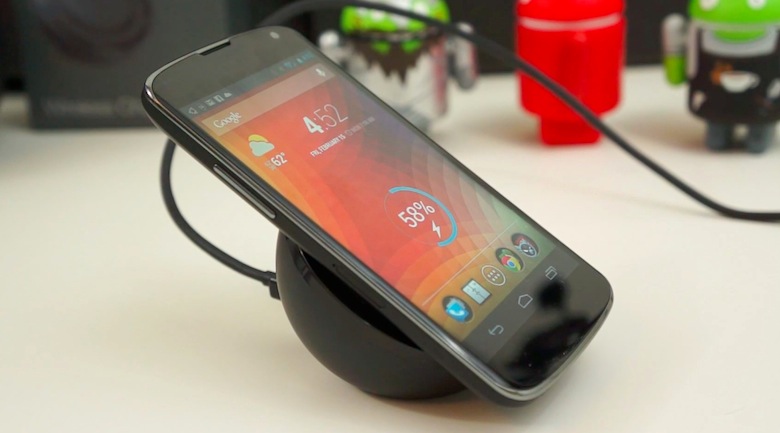
Until recently, the hopes of popularizing this type of charge lay with Google. For three generations of Nexus smartphones (Nexus 4-6), this feature was listed in the specifications, but suddenly disappeared in the recently introduced Nexus 5X and Nexus 6P. On theA question to Google representatives on the Reddit resource about the disappearance of an already familiar function received an exhaustive answer. Firstly, the preservation of the function would lead to an inevitable increase in the dimensions of the devices. Secondly, smartphones received USB Type-C , with which the recharge of the battery from 1% to 100% lasts no more than 97 minutes.
Apple, unlike Google, did not pick up the trend, citing the failure of technology. So, in 2012, after the presentation of the iPhone 5, Apple Vice President Philip Schiller explainedthe position of the company, which is that wireless charging cannot be considered as such if the accessory in any case needs to be connected to a power source. In addition, charging via USB, according to Schiller, looks much more universal: to recharge the charge, having the right cable, you can from a laptop, on an airplane and other places. Thus, lovers of iOS devices at the moment can use the wireless charging method only with the help of special receivers that will occupy the lightning connector.
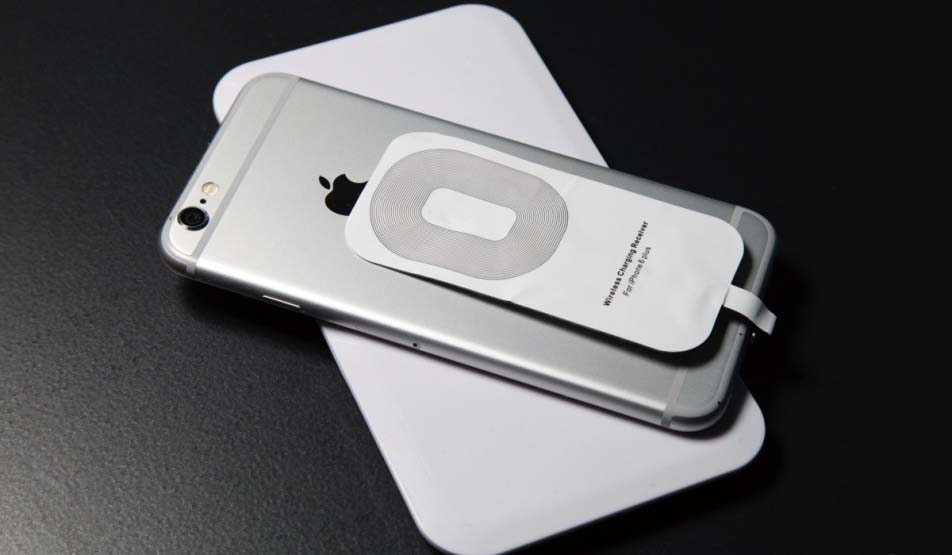
However, given the history of the production of large smartphones such as the iPhone 6 Plus, which had previously been openly criticized by the company, Apple’s position may change in the near future. A serious help in this situation may be the IKEA products, in which it was decidedinstall wireless charging. This approach can mitigate the disadvantages that Phillip Schiller spoke about, because this means that charging can be built in absolutely in all places where the user is.

There are also manufacturers on the market who intend in every way to develop wireless methods for charging their devices. The leader in this regard can be called the company Nokia (read Microsoft), which, after the release of the Lumia 920 with wireless charging function, still equips smartphones with this feature. For example, the recently introduced Microsoft Lumia 950 on Windows 10 also has this feature. Moreover, Microsoft launches several models at once.wireless panels. In addition to those that require a USB port for later powering the devices, there are even portable ones that allow you to wirelessly charge the device, for example, on the road.

Samsung is also worth noting, which not only deals with the introduction of wireless charging functions in the main smartphone models, but also releases devices such as the Pad EP-PG900I directly for recharging. For example, the flagship Galaxy S6 and Galaxy S6 Edge devices have this feature. Along with this, some smartphones HTC, ASUS, Sony, Huawei and even domestic YotaPhone support induction charging.
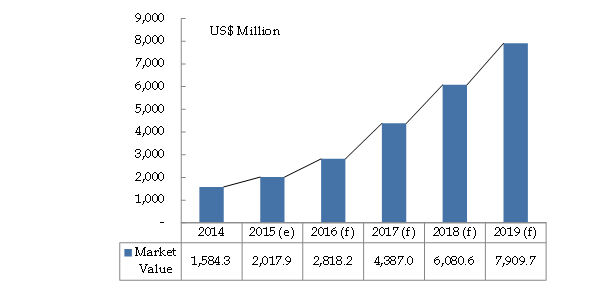
According to a study by MIC (Market Intelligence & Consulting Institute) in 2014, the market for wireless charging products reached $ 1.58 billion. At the same time, the global smartphone market is about 250 billion. According to the research forecasts, by 2019 the wireless charger industry will grow faster than the medical and defense ones.
The reason for such bold statements is that in addition to small-sized devices, the need for such a charging method can spread to a wide variety of everyday objects, including cars.
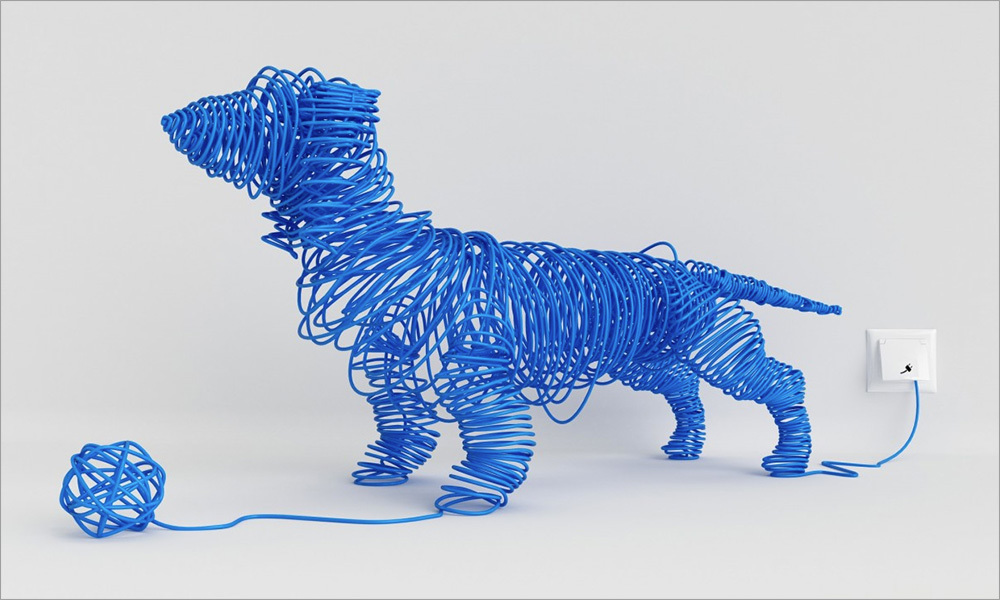
The first, and perhaps the key deterrent to the widespread adoption of wireless charging technologies is the lack of common standards. The nature of the problem becomes apparent in view of the above data on the potential scale of the market: each player wants to get the largest possible piece of the pie. In addition, each of the popular standards has its advantages and disadvantages.
The most common wireless charging standard is Qi , which was developed by the Wireless Power Consortium (WPC). Most of the above wireless charging implementations use Qi.
The standard is based on electromagnetic induction between two coils, one of which is in the charger, and the second is directly in the charged device. For a successful charging process, it is necessary that the coil plates are parallel to each other, and the distance between them does not exceed 4 centimeters.
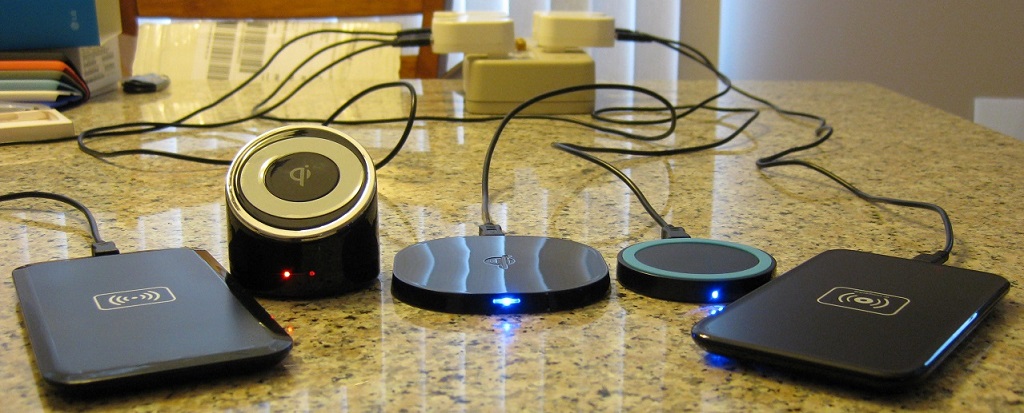
The second most common standard is considered the PMA (Power Matters Alliance), which also uses the principle of electromagnetic induction. It is interesting that the standard is supported by the same companies as Qi: HTC, Sony, LG, Qualcomm, MediaTek and many others.
The fundamental difference in technology is that the PMA uses different frequencies, and the main charging function lies with the receiver. By the way, the PMA is directly related to the history ofIntroducing Wireless Charging at Starbucks Coffee Shops.
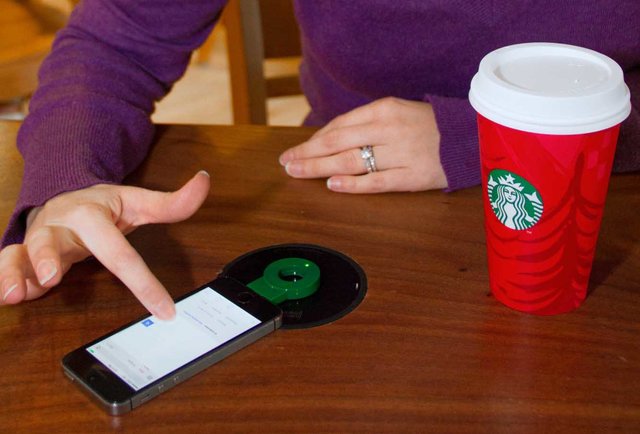
The three leaders are closed by the Rezence standard created by the Alliance for Wireless Power A4WP. Unlike previous technologies, Rezence is based on the effect of magnetic resonance. Of the obvious advantages, it is worth noting the ability to charge several devices at once thanks to the increased wave propagation region, higher power and range.

This set of features makes it possible to install such modules, for example, directly under the tables, thereby masking wireless charges. Despite this, the standard cannot boast of successful commercial implementations.
Be that as it may, all these standards are extremely similar to each other and clearly show the disadvantages of the technology. For example, using the device while charging is less convenient than with the traditional method with a wire.

One must think that with the global spread of wireless charging technology, only the strongest standard for unifying the type of charger can survive. However, at the MWC 2015 exhibition, MediaTek managed to convince fans of the wireless type of recharging devices that everything is not so bad.
As MediaTek conceived, the proprietary MT3188 chip for mobile devices can solve the problem of choosing one standard. According to the company, the development is the first that supports all known standards for wireless chargers.
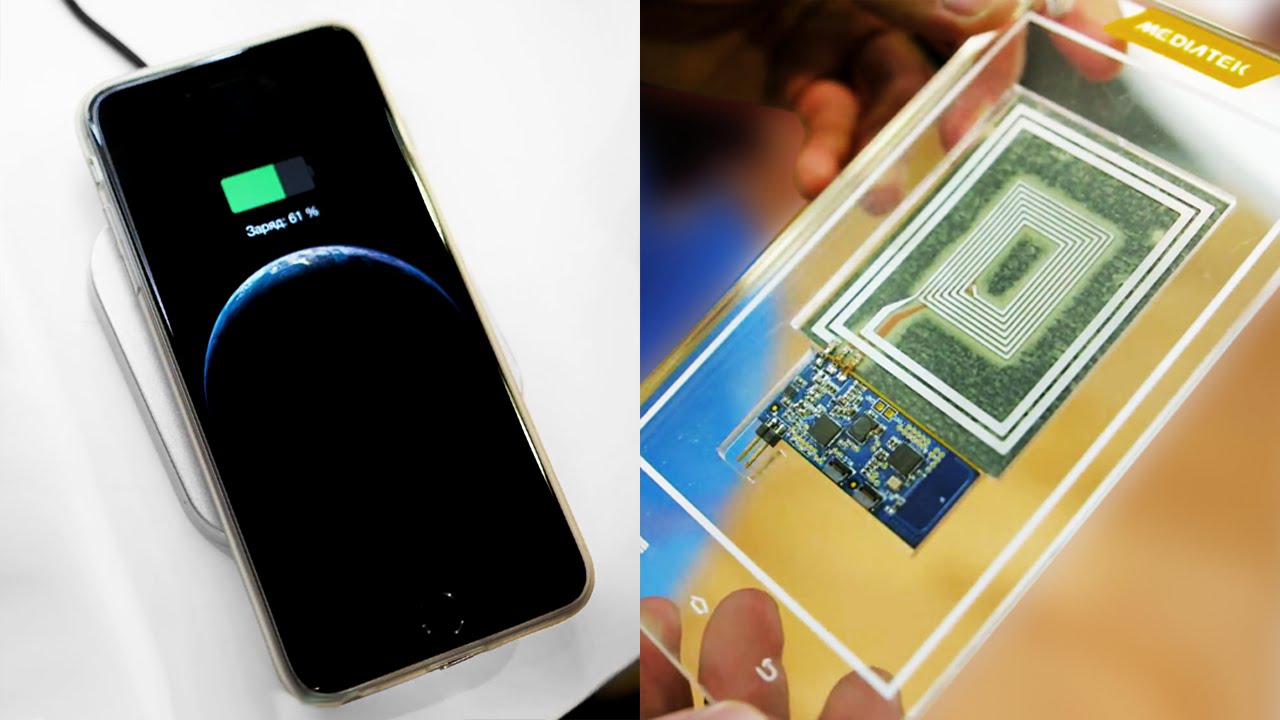
The chip has already entered mass production, and in the near future it will be used in tablets, smartphones and wearable electronics. At the company's stand in the framework of MWC 2015, it was possible to test the technology using covers for different devices with a chip or with a prototype device from MediaTek.
Despite the fact that it is impossible to state that wireless charging technology has fully entered the mobile device market, the prospects for the development of standards are already beyond its scope. So, the wireless type of charging can soon be widely used in such a high-tech production area as automotive.
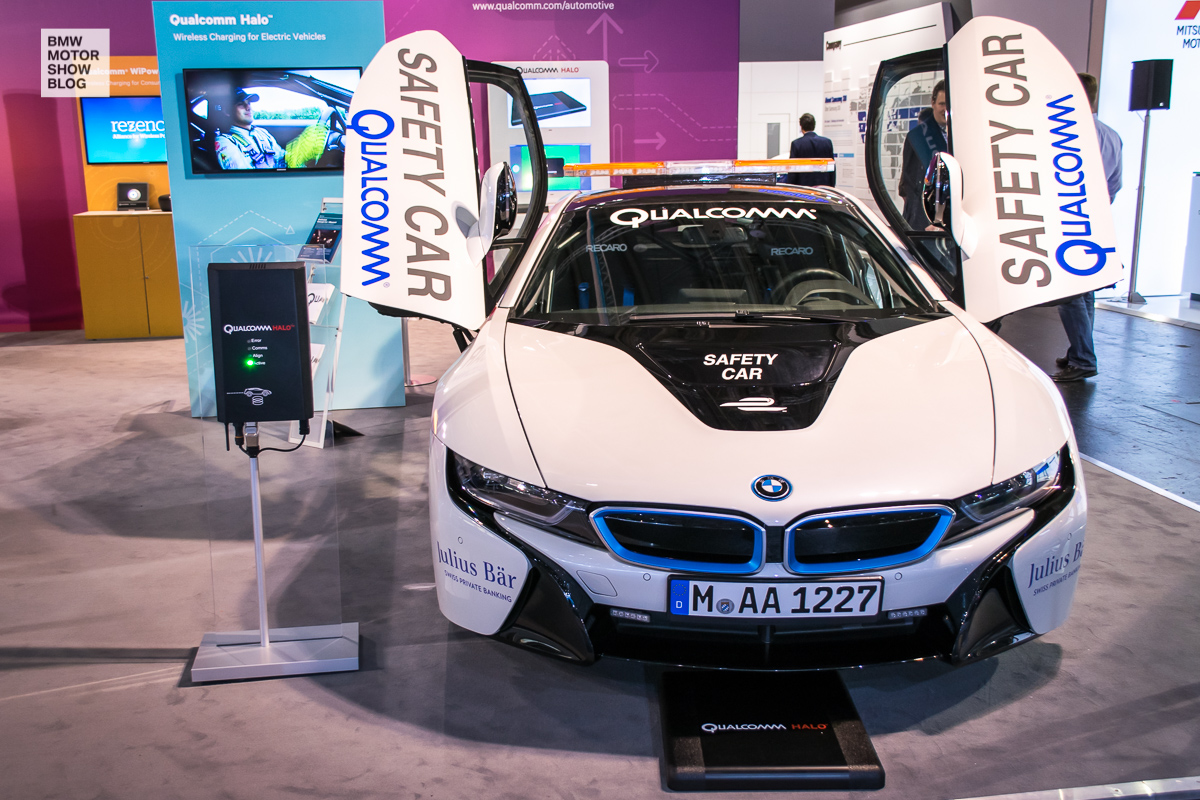
Currently, there are a number of ready-to-use and mass-production devices for hybrid vehicles. Qualcomm can be considered the flagship in the industry, which decided to think about scaling existing solutions of induction wireless chargers to larger facilities. Qualcomm Halo is one of the first introducedcommissioning chargers for electric vehicles, which is a small platform-transmitter of energy with a power source of 3.3 kW or 6.6 kW. Of course, the necessary equipment is also installed on the recharged car.
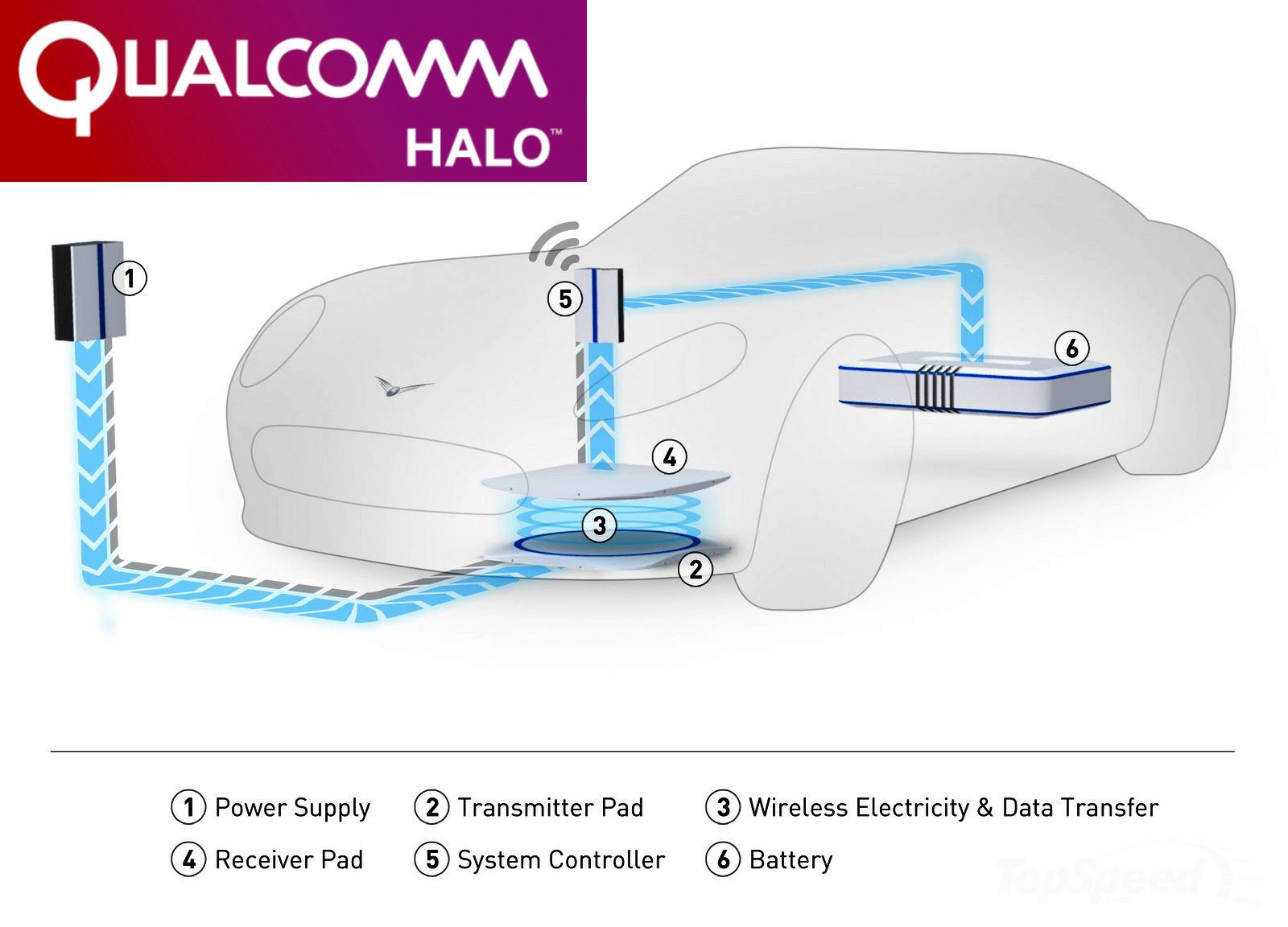
Qualcomm Halo is already in use in Formula E electric car racing championships. In particular, the BMW i8 sports cars are charged wirelessly. The developers do not hide the fact that the technology has flaws. For example, the efficiency of wireless charging is 5% less compared to the conventional method. The negative influence of the magnetic field of wireless charges has not been fully proven, but Qualcomm nevertheless provided for automatic shutdown of sensors when people and animals are present near the device.
Mobile devices acquire giant screens, powerful cameras and a lot of other newfangled and extremely "gluttonous" features for energy. By air it turns out to pay the bill and transmit information, but if you want to extend the life of the device, it is unlikely that you can avoid the need for a wired connection to an outlet.
Of course, there are a number of marketing and technical problems in the way of the “explosion” of the market for wireless chargers, but the wires will sooner or later remain in the past, and you can completely forget about recharging as a process. At least that's what Elon Musk promised us.

Motivation of manufacturers and market conditions
Those who closely monitor mobile news have noticed the tendency of manufacturers to introduce some trendy chips into smartphone news. One of the leading technology at the moment is a fingerprint scanner. It is in the flagships of Apple , Sony , Samsung , HTC and a whole galaxy of Chinese companies. It would seem, why the wireless charging function did not suffer the same fate, because the batteries of smartphones remain one of the main weaknesses of the device segment.

Until recently, the hopes of popularizing this type of charge lay with Google. For three generations of Nexus smartphones (Nexus 4-6), this feature was listed in the specifications, but suddenly disappeared in the recently introduced Nexus 5X and Nexus 6P. On theA question to Google representatives on the Reddit resource about the disappearance of an already familiar function received an exhaustive answer. Firstly, the preservation of the function would lead to an inevitable increase in the dimensions of the devices. Secondly, smartphones received USB Type-C , with which the recharge of the battery from 1% to 100% lasts no more than 97 minutes.
Apple, unlike Google, did not pick up the trend, citing the failure of technology. So, in 2012, after the presentation of the iPhone 5, Apple Vice President Philip Schiller explainedthe position of the company, which is that wireless charging cannot be considered as such if the accessory in any case needs to be connected to a power source. In addition, charging via USB, according to Schiller, looks much more universal: to recharge the charge, having the right cable, you can from a laptop, on an airplane and other places. Thus, lovers of iOS devices at the moment can use the wireless charging method only with the help of special receivers that will occupy the lightning connector.

However, given the history of the production of large smartphones such as the iPhone 6 Plus, which had previously been openly criticized by the company, Apple’s position may change in the near future. A serious help in this situation may be the IKEA products, in which it was decidedinstall wireless charging. This approach can mitigate the disadvantages that Phillip Schiller spoke about, because this means that charging can be built in absolutely in all places where the user is.

There are also manufacturers on the market who intend in every way to develop wireless methods for charging their devices. The leader in this regard can be called the company Nokia (read Microsoft), which, after the release of the Lumia 920 with wireless charging function, still equips smartphones with this feature. For example, the recently introduced Microsoft Lumia 950 on Windows 10 also has this feature. Moreover, Microsoft launches several models at once.wireless panels. In addition to those that require a USB port for later powering the devices, there are even portable ones that allow you to wirelessly charge the device, for example, on the road.

Samsung is also worth noting, which not only deals with the introduction of wireless charging functions in the main smartphone models, but also releases devices such as the Pad EP-PG900I directly for recharging. For example, the flagship Galaxy S6 and Galaxy S6 Edge devices have this feature. Along with this, some smartphones HTC, ASUS, Sony, Huawei and even domestic YotaPhone support induction charging.

According to a study by MIC (Market Intelligence & Consulting Institute) in 2014, the market for wireless charging products reached $ 1.58 billion. At the same time, the global smartphone market is about 250 billion. According to the research forecasts, by 2019 the wireless charger industry will grow faster than the medical and defense ones.
The reason for such bold statements is that in addition to small-sized devices, the need for such a charging method can spread to a wide variety of everyday objects, including cars.

Standardize it
The first, and perhaps the key deterrent to the widespread adoption of wireless charging technologies is the lack of common standards. The nature of the problem becomes apparent in view of the above data on the potential scale of the market: each player wants to get the largest possible piece of the pie. In addition, each of the popular standards has its advantages and disadvantages.
The most common wireless charging standard is Qi , which was developed by the Wireless Power Consortium (WPC). Most of the above wireless charging implementations use Qi.
The standard is based on electromagnetic induction between two coils, one of which is in the charger, and the second is directly in the charged device. For a successful charging process, it is necessary that the coil plates are parallel to each other, and the distance between them does not exceed 4 centimeters.

The second most common standard is considered the PMA (Power Matters Alliance), which also uses the principle of electromagnetic induction. It is interesting that the standard is supported by the same companies as Qi: HTC, Sony, LG, Qualcomm, MediaTek and many others.
The fundamental difference in technology is that the PMA uses different frequencies, and the main charging function lies with the receiver. By the way, the PMA is directly related to the history ofIntroducing Wireless Charging at Starbucks Coffee Shops.

The three leaders are closed by the Rezence standard created by the Alliance for Wireless Power A4WP. Unlike previous technologies, Rezence is based on the effect of magnetic resonance. Of the obvious advantages, it is worth noting the ability to charge several devices at once thanks to the increased wave propagation region, higher power and range.

This set of features makes it possible to install such modules, for example, directly under the tables, thereby masking wireless charges. Despite this, the standard cannot boast of successful commercial implementations.
Be that as it may, all these standards are extremely similar to each other and clearly show the disadvantages of the technology. For example, using the device while charging is less convenient than with the traditional method with a wire.

One must think that with the global spread of wireless charging technology, only the strongest standard for unifying the type of charger can survive. However, at the MWC 2015 exhibition, MediaTek managed to convince fans of the wireless type of recharging devices that everything is not so bad.
As MediaTek conceived, the proprietary MT3188 chip for mobile devices can solve the problem of choosing one standard. According to the company, the development is the first that supports all known standards for wireless chargers.

The chip has already entered mass production, and in the near future it will be used in tablets, smartphones and wearable electronics. At the company's stand in the framework of MWC 2015, it was possible to test the technology using covers for different devices with a chip or with a prototype device from MediaTek.
Not only for devices
Despite the fact that it is impossible to state that wireless charging technology has fully entered the mobile device market, the prospects for the development of standards are already beyond its scope. So, the wireless type of charging can soon be widely used in such a high-tech production area as automotive.

Currently, there are a number of ready-to-use and mass-production devices for hybrid vehicles. Qualcomm can be considered the flagship in the industry, which decided to think about scaling existing solutions of induction wireless chargers to larger facilities. Qualcomm Halo is one of the first introducedcommissioning chargers for electric vehicles, which is a small platform-transmitter of energy with a power source of 3.3 kW or 6.6 kW. Of course, the necessary equipment is also installed on the recharged car.

Qualcomm Halo is already in use in Formula E electric car racing championships. In particular, the BMW i8 sports cars are charged wirelessly. The developers do not hide the fact that the technology has flaws. For example, the efficiency of wireless charging is 5% less compared to the conventional method. The negative influence of the magnetic field of wireless charges has not been fully proven, but Qualcomm nevertheless provided for automatic shutdown of sensors when people and animals are present near the device.
Elon Musk approves
Mobile devices acquire giant screens, powerful cameras and a lot of other newfangled and extremely "gluttonous" features for energy. By air it turns out to pay the bill and transmit information, but if you want to extend the life of the device, it is unlikely that you can avoid the need for a wired connection to an outlet.
Of course, there are a number of marketing and technical problems in the way of the “explosion” of the market for wireless chargers, but the wires will sooner or later remain in the past, and you can completely forget about recharging as a process. At least that's what Elon Musk promised us.

